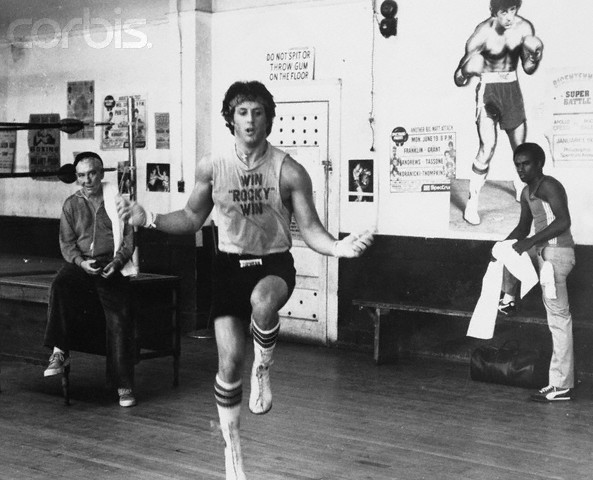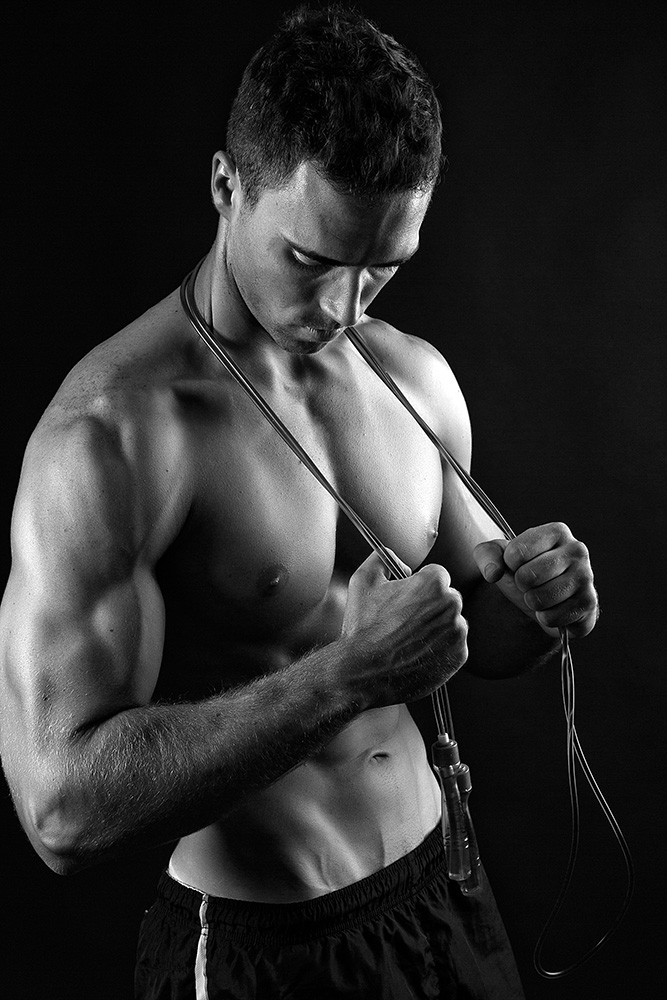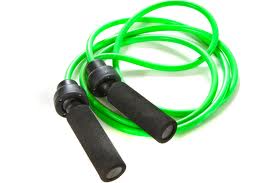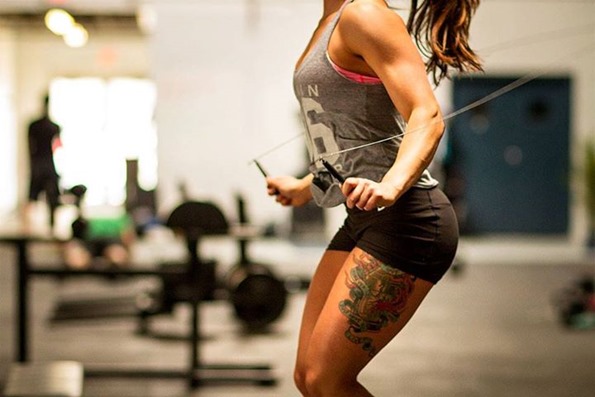There’s a ton of different exercises out there you can do when it comes to cardio conditioning and fat loss, be it medicine ball slams, battle rope waves, box jumps, stair sprints or rounds on the dreaded air assault bike.
But none of those quite compare to the feeling of banging out double-unders. Want to learn how to do double unders? You've come to the right place.
Why Double Unders & The Jump Rope?
Prized fighters, football players and fitness models all utilize the jump rope.
It’s a fantastic conditioning tool for melting away fat and increasing your athleticism. Specific benefits include...
Decreased risk of injury
Jumping with a skipping rope is a self limiting exercise, there really is no way to push yourself to the point of injury unlike sprinting, sled pushes and other intense cardio oriented exercises – the worst case scenario when jumping rope is your coordinator/rhythm gets out of time and you clip your ankles or forearms with the skipping rope, no big deal.
Performing interval sprints at a high speed on a treadmill can be tough on the joints – I personally get shin splints when I try to push myself with regular treadmill intervals (unless it’s a very high quality treadmill, not the usual cheap semi commercial gym ones).
Increased movement & co-ordination ability
To be successful at skipping you need to be coordinated, as you practise and practise and practise your coordinator will improve drastically.
In terms of movement the jump rope is also a fantastic tool for warming up before a game, a lifting session or whatnot.
Jump rope workouts & double unders build explosive speed & power
As you begin to master the coordination and form of skipping you can pick up the pace – fast jumps, double unders, crossovers.. there are no limitations to the different variations and combos of skipping you can do – all while building speed and explosive power through your calfs.
Combine regular skipping for speed with a low rep compound workout routine for strength and you’re set.
Jump rope workouts & double unders will blow up your calfs
Collectively guys really need to focus on their calf development, I’m included in this group.
Performing set after set of calf raises, alternating between both heavy and light loads just doesn’t seem to be work as well as it should… (Arnold Schwarenegger had ongoing issues getting his calfs to grow as he discusses in his biography, ‘Total Recall’).
The load placed on your calf muscles when performing a regular skip is nothing extraordinary as your calfs are used to carrying around your body all day – it can easily support the weight.
However, when you start to think outside the box and start performing single leg hops to increase the load on your calfs you’ll begin to see new growth!.
Jump ropes are a highly flexible, inexpensive interval training tool
You can use a jump rope literally anywhere, you don’t have an 100M track to sprint every though now do you?
For as little as $5 or $10 you can pick up a speed rope which will keep you going for quite some time.
Perfect for interval training (you can pair X number of skips or skipping for X number of seconds with any bodyweight exercise of your choosing such as push-ups, sit-ups, mountain climbers, burpees, jumping jacks).
I personally love the jump rope for cardio because you’re focusing, it challenges your coordination so you’re not left like a mindless zombie slowly pacing away on the treadmill.
Before I Teach You How To Do Double Unders…

Double unders themselves are not an incredibly hard physical feat.
A quick rotation of the wrists and a small jump is all that's required - you don't need to balance on your hands, raise your legs above your head or do anything absurdly demanding from a physical point of view.
Yet many that aim to learn double unders get frustrated and give up before they can string a few unbroken double unders together.
Those are the individuals that picked up a rope and expected to learn to do the double under straight away, it doesn't work like that.
You can't build a house until the foundation is set.
Pay attention to the details and prerequisites below so we can set your foundation and get building on the double unders!
The right rope for beginners is NOT a speed rope
"double unders are sooooo much easier with my new speed rope!"
Read the reviews of any speed rope for sale on Amazon and I'm sure you'll see a ton of similar comments. It makes sense, with sturdier handles and a razor thin cable, the rate at which you can smash out double unders is substantially quicker than that with a normal rope.
But a speed rope is not best suited for the beginner.
When you're performing double unders with a speed rope we're working purely on timing and muscle memory as the rope doesn't offer any feedback, you can barely even see the cable as it wisps over your head!
A basic, run of the mill rope that costs no more than a couple of dollars is the ideal starting rope to learn how to perform double unders because it offers feedback.
You can better time your jump and understand how the rope responds as you flick your wrists to turn it over your head - something you're going to have little feel of when hitting double unders with a speed rope.
Here's the rope I use and recommend.
The rope should reach your arm pits
You can have the most expensive, feature packed speed rope hand signed by the winner of the CrossFit games, but if it's too short or too long it's not going to serve you any good.
An extremely long rope is inefficient and will see you tripping up, an extremely short rope leaves no room for error (looking at double under world records you'll notice the ropes are literally skimming the top of the athletes head).
To get started you'll want the handles of your rope to reach your arm pits when you stand on the mid point of the rope with handles pulled up towards you.
Get good at jump rope singles first (be able to hit 100 unbroken before proceeding)
This goes without saying, you should be able to comfortably hit between 100 and 200 unbroken single unders before delving into learning the double under.
Why is this crucial? Hell, a correctly performed double under is really not that much different! A slightly quicker flick of the wrists and a slightly higher jump and there's your double under. In terms of body and arm position nothing changes. There's no lifting of the knees or kicking forwards as I'm sure you've seen people do.
The endurance, timing and overall familiarity you build with your single unders will translate across and make learning the double under (and eventually hitting them unbroken!) that much easier.
Don’t wear headphones! Listening to the rope is key
In my eyes music is a necessity when I'm performing cardio - be it outdoor stair sprints or jump rope at the gym.
Cardio is literally easier with music, studies indicate that our perceived effort is lower when we're cranking some beats.
That said.
Listen to music all you want once you've got your double unders mastered... until then leave your headphones off.
Why?
Your rope makes a distinct sound as it scrapes the floor, this sound is consistent from one good rep to another good rep.
When your arms are in the correct position (near your hips) you'll notice the distinct sound the rope makes - if you move your arms or begin to stick your arms out you'll notice this sound changes, the rope isn't hitting the ground as you've lifted the rope up too high - once you pick up on this you can make small corrections in positioning to keep your unbroken double unders going.
Mastering Double Unders
It’s ALL in the wrists
The biggest mistake I see being made when it comes to the jump rope is the looping arms.
The speed and power required to spin the rope comes entirely from the flick of your wrists. Your upper arms should remain tucked into your sides as if you were performing a biceps curl.
If you find that you're spinning and looping your arms around (be it out of habit or fatigue) I recommend doubling over a resistance band and wrapping it around your torso, keeping your arms pulled in to your sides - this will force you to flick the rope through the wrists as your arms will be stuck to your sides!
90% mistakes are due to this...
Hand position.
As mentioned above, your arms should be tucked against your sides while you flick through the wrists to spin the rope.
As you begin to fatigue one of two things happens, resulting in the inevitable breaking of your set as you trip up on your rope:
1- You lift your arms up (your hands are no longer inline with your waist)
2- You spread your arms further apart (the rope is now shorter and won't clear your feet)
Now that you know this you'll be able to recognize it straight away and correct it!
Begin practicing in the mirror - arms tucked in while maintaining your hands at waist height, listen for the consistent clicking sound as the rope hits the ground under you on each repetition.
Don’t lift your knees up, don’t kick your legs forward
There's a misconception that when you're performing double unders your jump needs to be extensively modified... it does not.
Kicking your legs forward will cause your body to be off balance - you can perform double unders using this technique but you'll find it extremely difficult to exceed 100+ using this style.
Same thing goes for bringing your knees up, not only does put you off balance (often making for an awkward landing) but i's inefficient, you're wasting too much energy and won't be able to sustain it for a decent number of repetitions.
Using the exact same style of jump as you would for your single unders have a slight bit more spring in your jump (often called a power jump) as you jump off the balls of your feet.
This 'power jump' should see you jumping a few inches higher than a regular jump.
Once again, a correctly performed double under is all about efficiency - small wrist flicks with relatively small jumps (enough for the rope to clear under us twice).
Don’t aim for 100 out of the gate (aim for 1, 2, 5, 10…)
Practice an individual double under before you think of stringing together multiple double unders.
Small, incremental goals when it comes to your double unders will keep you motivated while also gauging your progress.
My Double Under Progression Recommendation...
- 100 single unders
- 5 single unders - 1 double under - 5 single unders
- 3 single unders - 1 double under - 3 single unders - 1 double under
- 2 single unders - 1 double under - 2 single unders - 1 double under
- 1 single under - 1 double under - 1 single under - 1 double under
- 2 unbroken double unders
- 5 unbroken double unders
- 10 unbroken double unders
Once You’ve Got ‘Em…. Double Under Workouts
For time
10 double unders
10 push-ups
20 double unders
20 push-ups
30 double unders
30 push-ups
40 double unders
40 push-ups
50 double unders
50 push-ups
5 rounds
10 double unders
10 burpees
10 pull-ups
AMRAP in 20 minutes
10 double unders
10 medicine ball slams
Every set must be unbroken (or restart that set)
10 double unders
20 double unders
30 double unders
40 double unders
50 double unders
40 double unders
30 double unders
20 double unders
10 double unders
For time
100 double unders


